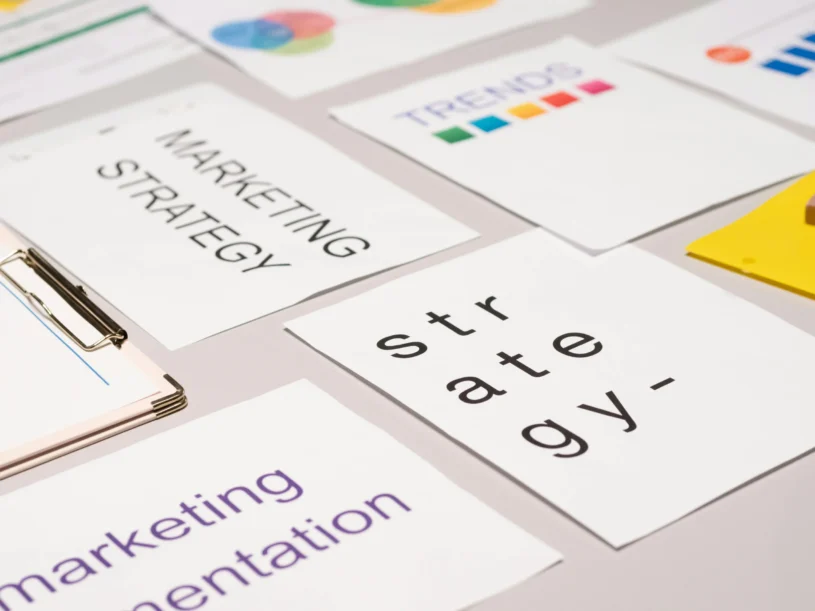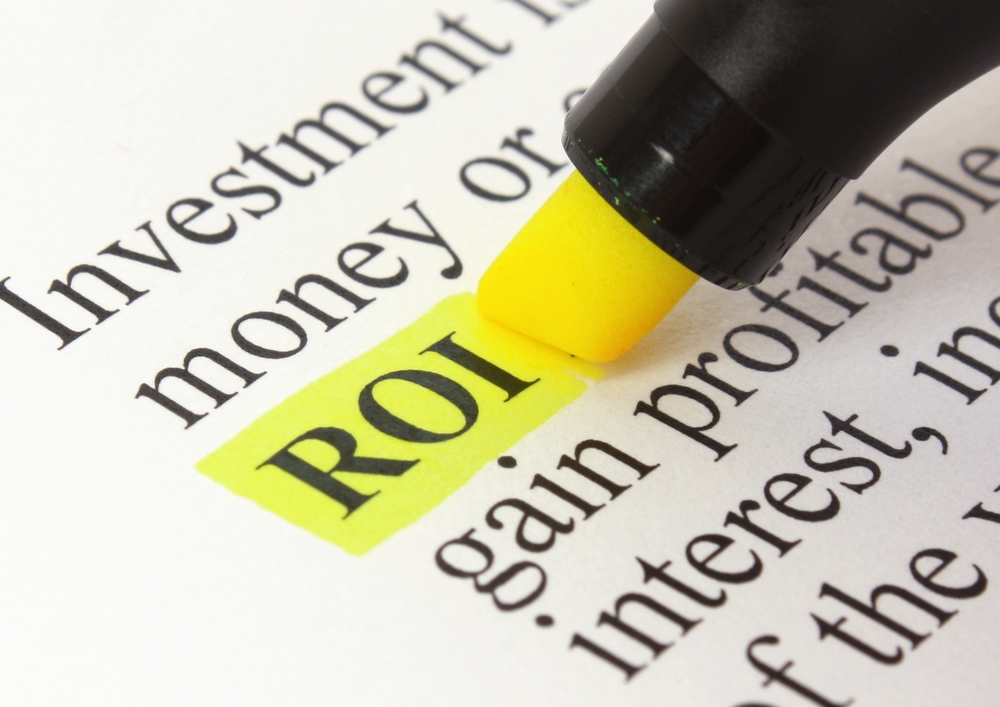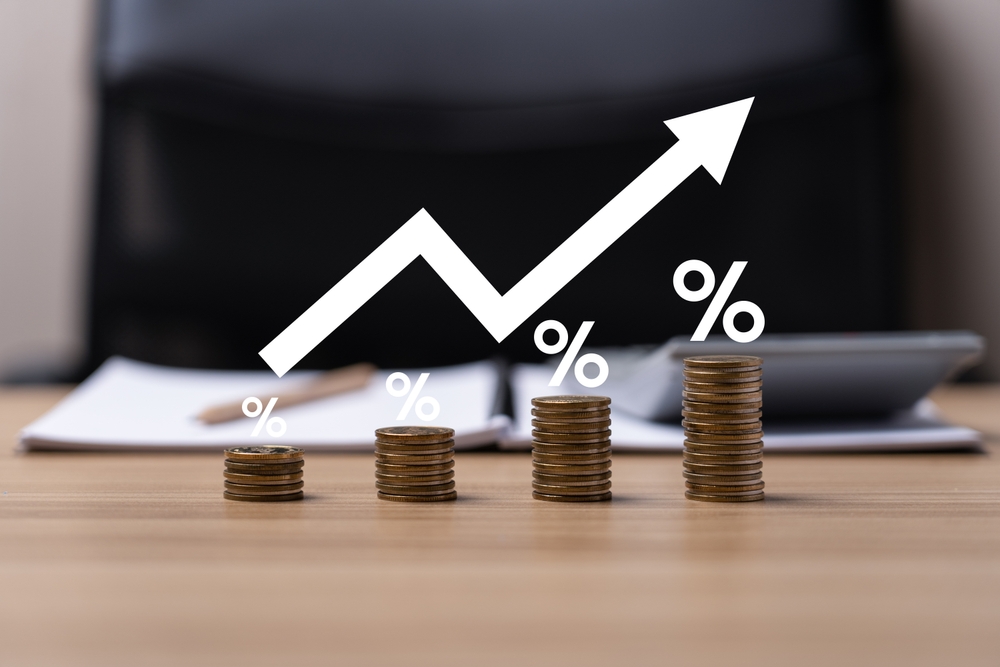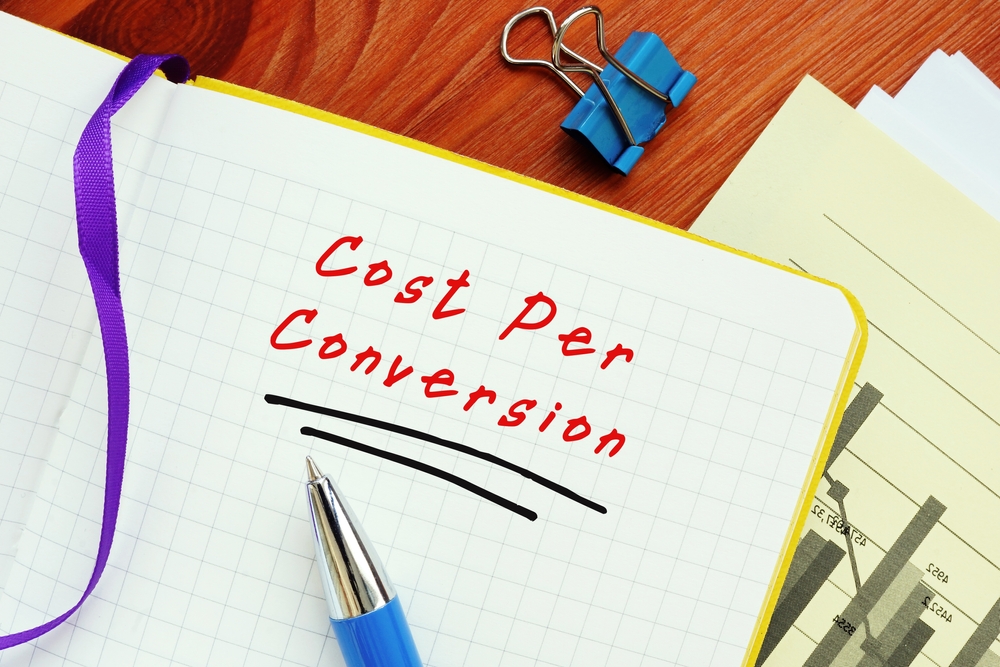What is influencer marketing ROI?
Influencer marketing ROI refers to the total financial return a brand receives after deducting all costs. Measuring your ROI is a way to quantify and assess the financial impact of your influencer marketing campaign on your brand.
The metric, therefore, tells you how your influencer collaborations stack up against the cold, hard investment. We’re talking real tangible results – not just the likes, shares, and mentions.
Think about it along these lines: you wouldn’t invest into a business without knowing the potential returns, right? The same goes for influencer marketing campaigns.
Every marketing strategy revolves around boosting your value for your money. ROI is your guiding compass which gauges what’s working for your brand and what isn’t.
Why does influencer marketing return on investment matter?

With over 93% of online marketers using influencer marketing in their strategies, we’re past the age when influencer marketing was a relatively new concept. The same survey revealed that only 63% of online marketers leveraged influencers back in 2016.
You might be wondering, “Why is it important to track ROI?” Well, positive ROI attributes to this upsurge of more brands joining the influencer marketing bandwagon. Here are a few more fundamental reasons why measuring investment returns is important besides securing buy-ins from worldwide brands:
- It provides a clear indication of what works for your influencer campaigns and what doesn’t.
- It allows you to double-down on your best performing avenues to maximize your bang for your buck.
- With clear limelight on your performing creators, you are able to reward them for their efforts and, therefore, nurture brand-influencer relationships.
So no more shooting in the dark. By estimating your return on investment, you can guarantee that your marketing endeavors are conveying positive outcomes and driving significant results for your brand sales.
Understanding how your brand sells
Here’s the deal, your brand is like a puzzle and each piece represents a unique aspect of the selling process. From the moment a potential consumer lays eyes on your product to when they hit that “Buy Now” button, each step assumes a crucial role in the grand scheme of things.

Essentially, your influencer marketing budget should account for each of these aspects. It should cover for advertisements, MVP testing, content assets, influencer promotions, product discounts, and more.
Your marketing strategy should also outline a solid structure for each of these instruments such that by the time you’re making your first sale, you can track down which strategy prompted the sale.
So by stripping back the layers of your sale process, you gain important insights into what is most important to your consumers; what do they respond to? What makes your ideal customer tick?
Some key questions to consider to understand how your brand sells include:
- What is your brand’s primary income stream?
- What action would you want a potential consumer to take after encountering your product through influencer promotions and campaigns?
- What is your brand sentiment among your audience and what influencer their purchasing power?
By understanding this sales process, you can single out important metrics that will help measure your ROI and analyze the impact of your influencer marketing campaigns.
Optimizing your influencer marketing campaign to easily calculate influencer ROI
As demonstrated above, there are certain strategies that help simplify ROI tracking and make your overall calculation a breeze. They include:
1. Define clear objectives and KPIs
Before diving headfirst in the influencer marketing abyss, set out your objectives and the metrics that will account for achieving these objectives -the latter represents your key performance indicators.
View it like planning for a road trip – you don’t just wake up one morning and hit the road without a destination, right? You invest your time in selecting your destination, preparing your luggage, planning your budget, means of transport, and what nots.
Well, the same goes for influencer marketing campaigns. You have to articulate the aims for your campaign. Is it to boost brand awareness, sales, or increase website traffic?
Whatever your goals are, define measurable KPIs that will tangibly measure your success. Whether its conversions, engagement rate, follower growth, or click-through rates, quantify what success looks like for your brand.
2. Leverage trackable links and unique promo codes

Trackable links help brands determine where their assets came from. These are special URLs designed to track the source of traffic and conversions.
They help brands rate the effectiveness of their campaigns and which influencer efforts are bringing the buck home. It’s like having a GPS tracker for your revenue generation activities.
Unique promo codes, on the other hand, are marketing tools that give customers an incentive to make a purchase. Promotional codes come in the forms of discount or coupon codes, complimentary services such as free delivery, installation, free shipping, or full refunds.
These work to benefit both the brand and its consumers – the brand generates revenue as the consumer gets a product at a discounted price or with a complementary service. It’s a win-win affair.
Like tracking links, promo codes also help brands articulate where their traffic and conversions come from and therefore get insights on where their consumers spend their time.
Conversion tracking
Here’s a little secret – the path to true satisfaction and success is found by going the extra mile.
In addition to using tracking links and promo codes, deliberate conversion tracking within your influencer marketing strategy.
By attributing a purchase or install to a particular platform, channel, ad, or influencer, brands not only see what works best for them but can also leverage these conversion data points to calculate their revenue. It’s like killing two birds with one stone.
3. Invest in influencer relationship management (IRM) tools
Influencer Relationship Management (IRM) refers to all interactions between an influencer and a brand. IRM tools, therefore, are platforms which facilitate these interactions.
From influencer discovery to influencer content briefs, contracts, campaign management, performance analytics, influencer payments, and other forms of collaborations.
Leveraging influencer search platforms streamline these operations from the beginning to the end. They are like like your personal assistants that manage, track, and optimize our influencer marketing campaigns seamlessly.
In addition to other capabilities, IRM tools come with real-time performance analytics features that help brands monitor the progress of their influencer campaigns and track revenue generated.
4. Customer journey mapping (CJM)
CJM is the process of visualizing the interactions potential customers have with your brand, understanding their pain points and influences on customer behavior.
This way, brands can optimize their campaigns to meet the needs of consumers at the difference stages of buying process and as a result, boost conversions and influencer marketing ROI.
By creating customer-centric experiences, brands eliminate the loopholes that would have otherwise shunned a potential consumer completing a purchase.
CJM is a powerful strategy that helps businesses maximize their return on investment.
What does a good influencer marketing ROI look like?
While there’s no cap on the appropriate return on investment brands should hit in these digital marketing and social media marketing arenas, anything but a negative (a loss) is considered a positive return.
However, on average, a good influencer marketing ROI ratio is 5:1, that is, for every $1 spent there is a $5 return.
Statistics reveal that the top 13% of influencer marketing businesses generate a 20% return or more on every dollar invested. While the numbers are good when calculating ROI, the level of engagement also speaks volume to your ROI.
These are not just the likes and follows, no. We’re talking the kind of metrics that show your audience is actually paying attention – comments, shares, website traffic, you name it.
When evaluating your ROI, don’t just stop ate the surface-level metrics but dive deeper into engagement data to see how your audience is interacting with your campaign. Now let’s get to the meaty part we’ve all been waiting for.
How to calculate influencer marketing ROI
Spoiler alert – measuring ROI is not just about crunching numbers, it’s about considering both the tangible and intangible aspects of your influencer efforts.
Just like there are two sides of a coin, the ROI of influencer marketing can be measured both qualitatively and quantitatively. Let’s dive in.
Qualitative measuring of ROI
Qualitative ROI are the intangible metrics that cannot be easily converted to monetary values but are worth their weight in gold. To conduct a qualitative audit of your influencer campaign, consider questions like:
- Did the campaign resonate with your target audience?
- Were your brand values reflected in your campaign?
- What level of engagement did you receive?
- What was the brand sentiments of your audience like?
These questions will help you assess the following variables of qualitative ROI measurement:
1. Audience analysis and segmentation
Understanding your consumers is the way to make your online campaign impactful. From understanding their demographics to brand sentiments and choosing the right influencers, you can proficiently measure the influencer marketing ROI of your endeavors.
Measuring audience demographics
This involves analyzing whether the audience interacting with your influencer campaign instruments fit your match for target audience. Monitoring audience demographics is checking for their age, location, gender, interests, and more.
Alignment with your target demographic is a good sign that your campaign had the right influencers and channels that promote brand visibility.
Audience sentiments
How does your audience feel about the campaign? What are they saying regarding your products or services? Don’t just read the comments and reviews from your campaigns, analyze the tone and attitudes of the audience.
Consider it like having a mood meter for your audience. Audience sentiments offer invaluable insights into how you stack up against competition.
It is also an innovative way to learning your customer’s pain points and knowing which stages of your buying process need some adjustment. For instance, you may only be alerted of a broken link through analyzing the audience sentiments.
Audience growth
Your audience growth rate is the evolution of your social media following. But how do you measure follower growth? By monitoring social media metrics such as engagement, reach, and following against the time period of your influencer campaign. However, be warned of fake followers as
By keeping tabs on your audience growth over time, you’ll be able to assess the impact of your influencer campaigns on your brand’s overall audience.
Influencer audience fit
The secret to forging meaningful connections with your target audience is finding them the right influencers.
By partnering with influencers whose audience aligns with your brand’s target demographic, you’ll ensure maximum impact and ROI. So, how do you measure influencer audience fit?
Well, by analyzing the overlap between your audience and the influencer’s audience. Look for similarities in demographics, interests, and values – the closer the match, the bet
2. Brand awareness
Brand awareness refers to the familiarity your audience has with your brand assets – your logo, name, products, voice, etc.
Your brand awareness reflects deeply on consumer purchasing intent which directly affects your influencer marketing ROI.
Let’s reflect this for a moment – for a consumer to purchase your product or service they must have a positive perception about your brand and also a positive emotional connection.
To analyze your brand awareness, look at the brand mentions on your social media, are they positive or do they convey a negative emotional tone?
Analyze your landing page traffic and search volume. Potential consumers are likely to complete a desired action upon encountering your ads.
Ways of measuring brand lift
Brand lift refers to the positive perception of your brand. Although this metric is unquantifiable, you can measure your brand lift by conducting targeted surveys and through focus groups where you get to evaluate how your audience feels about your brand.
Inquire what comes to their mind upon encountering your brand assets. Gauge their recall ability to know how likely they are to turn to your brand when they need a product or service.
Lastly, how likely would they recommend your brand to other people?
Quantitative measuring of ROI
Alright, now let’s move on to the good stuff; the number crunching. This is where we grab our spreadsheets and get down to business.

When calculating your quantitative ROI, the following variables come into play:
1. Engagement metrics
Engagement rate
This metric shows how your target audience interacts with your campaign content. The metric evaluates whether your messaging technique resonates with your target audience and also whether your campaign has achieved audience-influencer compatibility.
A high engagement rate means your audience is engaging actively with your campaign content while a lower engagement rate means the content is not appealing to your audience.
This could be due to a variety of reasons including irrelevant campaign content, lack of call-to-actions that prompt users to engage, poor timing, or even inactive following which may be indicative of fake followers.
The formula below calculates your engagement rate:
Engagement rate = (Total engagement ⁄ Total number of followers) × 100
Where:
Total engagement is all the likes, comments, shares, and saves your post receives.
Total number of followers is your account’s following at the time of the post.
Cost per engagement (CPE)
CPE is the cost you incur for each engagement your influencer content generates. A lower CPE means your brand spends less to get viewers to interact with their campaigns and therefore a higher ROI. It means your audience is actively engaging with your ads – higher engagement.
A higher CPE, on the other hand, means it costs more to generate active engagement and there’s lower engagement from your influencer content. This relatively concludes that your influencer campaign hardly resonates with your audience or your messaging isn’t hitting the mark. This calls for a reassessment of your marketing strategies.
To calculate CPE:
CPE = Total campaign cost / Total engagement
Where:
Total campaign cost is the total cash spent to run the campaign.
Total engagement is the sum of likes, comments, clicks, saves, shares, and any other interaction from your post.
2. Click-through rate (CTR)
CTR estimates the quantity of clicks your ad content generates. It’s the percentage of users who successfully follow a call-to-action (CTA) after interacting with your ads.
In the long run, it demonstrates how good your influencers are at appealing to their followers with their attention-worthy content. To calculate your campaign CTR:
CTR = (Number of clicks / Total impressions) × 100
Where:
Number of clicks refers to the number of people who clicked on your ad/promotion.
Total impressions refers to the number of people who saw the ad.
3. Conversion metrics
Conversion rate
While CTR indicates how many users are interested in your ads or promotions, conversion rates indicates how many of these users successfully turn that interest into actionable results such as making a purchase, installing a resource, or signing up for a newsletter.
Therefore, a higher CTR might indicate higher website traffic but it is higher conversion rates that ultimately translate this traffic into valuable outcomes such as sales and leads.
This indicates more value for your investment and a higher ROI. To calculate conversion rate:
Conversion rate = (Number of conversions / Total number of visitors ) × 100
Where:
Number of conversions is the total number of visitors who completed an action.
Total number of visitors are visitors who engaged with your post during the period of the campaign.
Cost per conversion (CPC)

CPC is the cost incurred for every successful lead or rather, the amount of money spent to acquire a single conversion from a campaign. Your brand will incur a cost each time a user converts from viewing your campaign. A higher CPC means you’re spending more to convert a mere visitor to a customer.
This could be attributable to several factors such as high competition from your competitors, poor audience targeting which leads to lower conversions, or that your influencers don’t connect with their followers.
Contrastingly, a lower CPC indicates that you spend less for each successful conversion. This means that your campaign messaging appeals to your audience. To calculate your CPC;
CPC = (Total campaign costs / Number of conversions) × 100
Where:
Total campaign costs are all costs incurred during the campaign, including influencer fees, production expenses, etc.
Number of conversions is the total number of times customers have visited your site from your campaign post and completed a desired action.
4. Cost per thousand views
Also referred to as cost per mille (CPM), with “mille” being Latin for ‘thousand’, this metric refers to the cost incurred for a campaign/ advertisement to acquire 1000 impressions or views.
CPM not only calculates the cost of eyeballs on your content but it analyzes the effectiveness of your campaign reach to your audience. It is particularly important for video content or sponsored posts.
A higher CPM means you’re spending more to reach 1000 people while a lower CPM means cost-effectiveness for wider reach.
Your campaign reach is affected by factors such as audience targeting, ad/campaign relevance, and niche competition. All these variables may affect your ad content differently.
When your ad content is not relevant to your audience – meaning they engage less with your content, the platform may charge more to feature them.
You can calculate your CPM through:
CPM = (Total campaign cost / Total impressions) × 1000
Where:
Total campaign cost is the total production cost of the campaign.
Total impressions are the number of times the campaign was viewed.
5. Customer acquisition cost (CAC)
Customer acquisition cost refers to the total expenditure of acquiring a new customer. Both customer acquisition cost and cost per conversion are invaluable metrics in calculating how much it costs to onboard new customers.
But how do they differ? Well, CPC focuses on the cost of an individual conversion while CAC covers the wholesome cost of new customers onboarded within a campaign period.
This includes including the marketing costs, property, equipment, or any other relevant financial instrument used to convince a visitor to buy a product or service.
A higher CAC means that the cumulative costs of acquiring a new customer is relatively high. This could be due to high competition, poor audience targeting, or maybe you’re just selling a high-end product to the wrong audience.
Alternatively, a lower CAC means you spend cumulatively less money to get a customer. This indicates your campaign is effective and also positive brand perception.
To calculate your CAC;
CAC = (Total campaign cost / Number of newly acquired customers) × 100
Where:
Total campaign cost is the total amount of money you’ve spent on your influencer campaign.
Number of newly acquired customers are those customers gained during the campaign period.
What is a good CAC?
Evaluating your CAC introduces us to a new metric – customer lifetime value (CLV). CLV refers to the total revenue a business expects to generate throughout their entire relationship with a customer. But how does CAC rank against CLV?
Here’s an interesting discovery – if the CAC of onboarding a particular customer exceeds their lifetime value with your brand, then your business is incurring a loss. This is how CLV is used to gauge customer acquisition costs.
6. Share of voice (SOV)
Like they say -there are many monkeys in the forest. Your brand might be just a drop in the sea of influencer marketing. So how would you calculate your market presence? That’s easy! By calculating your share of voice.
Share of voice represents how your stacks up against the competition. It is the quantifiable measure of your brand visibility compared to your competitors. How loud is your brand image in a crowded room of social media chatter?
To calculate your brand SOV:
SOV = (Total mentions of your brand / Total brand mentions in your industry) × 100
Where:
Total mentions of your brand are the number of times your brand has been referenced in various social media platforms.
Total brand mentions in your industry are the number of times your brand and competitors has been referenced within your industry in the saturated markets.
A higher SOV indicates a strong market presence and that someone understood their marketing assignment! It shows that your marketing efforts are worth their weight and your brand is dominating the industry. A lower SOV indicates there’s room for improvement right from brand visibility to perception.
Bringing it all together: The ROI equation
Alright, my savvy marketers, it’s time crank it all together and end the show by calculating your influencer marketing ROI. This is done through a simple straightforward formula:
ROI = ((Total campaign revenue – Total campaign costs) / Total campaign costs) × 100
And voila! You now have your influencer marketing ROI. Quick tips: a positive ROI indicates value for your influencer campaign investment while a negative figure is not quite the expected result after all the financial input. But with proper strategy you can easily sway that figure to the right and make it a bright day.
So grab your calculators, it’s time to become ROI masters!

